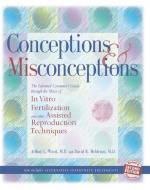|
This section contains 1,238 words (approx. 5 pages at 300 words per page) |

|
Organisms must reproduce and, in the context of evolution, must choose among different methods to do so. There are two major strategies for reproduction—sexual and asexual. Each tactic has its own advantages and disadvantages, and each is appropriate for certain situations. Vertebrates, such as humans, are almost exclusively sexual in their reproduction, many simpler animals are asexual. To decide which reproductive strategy may prove advantageous in a given set of circumstances, it is important to understand how they differ.
Asexual Reproduction
Asexual reproduction takes a variety of forms. The simplest one-celled organisms may reproduce by binary fission, in which the cells simply divide in half. This form of reproduction creates a clone of the parent, and has the benefit of usually being very quick and energy efficient. For example, bacteria that reproduce by binary fission can give rise to progeny every...
|
This section contains 1,238 words (approx. 5 pages at 300 words per page) |

|


